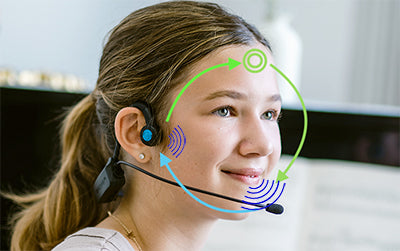
The Picture Exchange Communication System (PECS) has long served as a guiding light for many non-verbal individuals. However, as we usher in a technological renaissance, artificial intelligence is carving out its role as a transformative force within the realm of augmentative and alternative communication (AAC), similar to the way sensory tools have been aiding those with sensory processing challenges.
The Dawn of AI in Communication Assistance
Envision a world where expression's boundaries are reimagined, granting a voice to the silent—a voice that resonates within the very fabric of society. This vision is transitioning from the realm of science fiction into reality with AI-driven communication tools that bestow upon individuals with communication difficulties the ability to articulate their thoughts and emotions with unprecedented precision and ease.
These intelligent systems are designed to learn from the user, adapt to their unique interaction styles, and even anticipate their needs and desires. From sophisticated speech-generating devices to context-aware applications, AI is not just facilitating communication—it's revolutionizing it.
The implications of these advancements are profound, enabling individuals who once confronted insurmountable barriers to engage in conversation, make decisions, and express their individuality with newfound simplicity.
Empowerment Through Innovation
Consider the story of Emma, a child with cerebral palsy who had never spoken a word. While traditional AAC devices represented progress, it was the advent of AI-powered communication tools that truly unlocked her world. As Emma interacts with a touchscreen, the AI software interprets her intentions, suggesting options and learning her preferences as time passes.
For Emma's family, this technology is more than a mere device; it's a conduit to understanding her thoughts and feelings. It's the 'hello' after years of silence, the tearful 'I love you,' and the playful 'I want to play' that beckons them into her world. This is the essence of AI in AAC—a technology that continues to evolve and empower.
This innovation isn't confined to speech alone. AI is also enhancing non-verbal communication by interpreting gestures and facial expressions, converting them into digital speech or text. This multifaceted approach to AAC is building a more inclusive world, one interaction at a time.
Integrating AI and Sensory Processing
AI's role extends beyond mere speech or text generation; it's about fostering understanding and being understood. AI is now being integrated with sensory processing support, aiding individuals with autism to better navigate and interact with their environment.
One innovative product, Forbrain, employs the voice to train the brain. Grounded in the Tomatis® Method and backed by science, Forbrain sharpens speech, attention, and auditory processing, complementing AI-driven AAC devices.
Forbrain isn't merely a tool; it epitomizes the symbiotic relationship between human ingenuity and our intrinsic need for connection. It marks a step toward a future where technology doesn't supplant human interaction but rather enhances it.

Discover how Forbrain can support sensory processing
Creating a World of Possibilities
Delving into the capabilities of AI in AAC unveils layers of potential that reach far beyond fundamental communication. We're discussing the realms of education, employment, and independence—a world where every individual is afforded the opportunity to contribute, learn, and thrive.
As we continue to navigate the expanse of AI in AAC, we must approach with responsibility and a dedication to accessibility, ensuring that these advanced technologies are within reach for all who require them.
Charting the Future of Communication
The odyssey of communication is perpetual, with each innovation paving the way to new discoveries. As we chart this future, we do so with an open heart, cognizant that technology is most impactful when it serves to amplify human connectivity.
Let us construct a world where every voice is heard, every thought conveyed, and every aspiration pursued. This is the commitment of AI in AAC, and it is a pledge we must all endeavor to realize.





Leave a comment